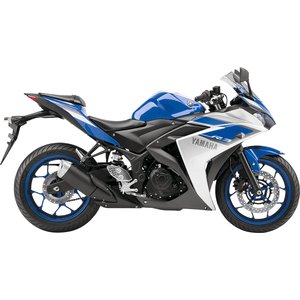Yamaha YZF-R3 [2015-2018]: A Gateway to Supersport Thrills
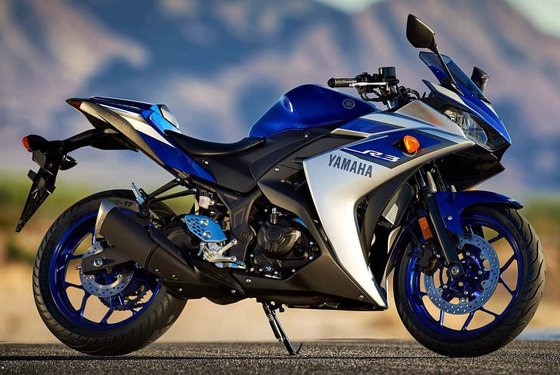
Introduction
The Yamaha YZF-R3 isn’t just a motorcycle—it’s a masterclass in accessible performance. Designed to bridge the gap between entry-level machines and full-blown supersports, the 2015–2018 R3 generation redefined what riders could expect from a lightweight twin. With its R-series DNA, this bike delivers track-day aesthetics with commuter-friendly ergonomics, all while hiding engineering secrets borrowed from its bigger siblings, the R1 and R6.
Having spent a day slicing through mountain roads and navigating urban sprawl on a 2017 model, I can confirm: this is a machine that wants to be ridden hard, even if it’s forgiving enough to coddle newcomers. Let’s dissect why this generation remains a benchmark in the lightweight sportbike segment.
Design & Ergonomics: Supersport Looks, Human-Friendly Proportions
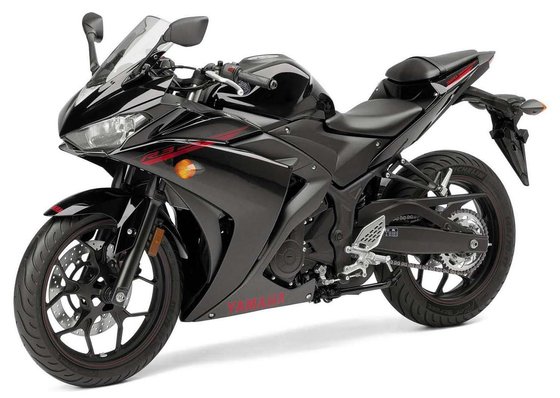
Aggressive Styling
Yamaha nailed the "mini-R1" aesthetic. The dual LED-accented headlights (halogen on pre-2017 models), sharp fairing lines, and a raked tail section scream racetrack intent. The MotoGP-inspired livery options (like the 2016 Replica Edition) add visual drama, though even the base Raven black looks stealthily premium.
Rider Triangle
Clip-on handlebars sit above the triple clamp—a genius move. You get a slight forward lean for sporty control without sacrificing comfort. The 780mm (30.7") seat height is a gift for shorter riders, and the narrow profile lets even 5’5" riders flat-foot easily. Compared to the crouched posture of a Ninja 300, the R3 feels almost upright, making hour-long rides fatigue-free.
Quality Touches
- Dashboard: The analog tachometer (redlining at 12,500 RPM) paired with a digital speedo is legible at a glance. Gear position indicator and fuel economy readouts are bonuses.
- Weight Distribution: At 167–169kg (368–373 lbs) wet, the R3 disappears beneath you. Flicking it through traffic feels like piloting a bicycle with a jet engine.
Engine & Performance: The Sweet Science of a 321cc Twin
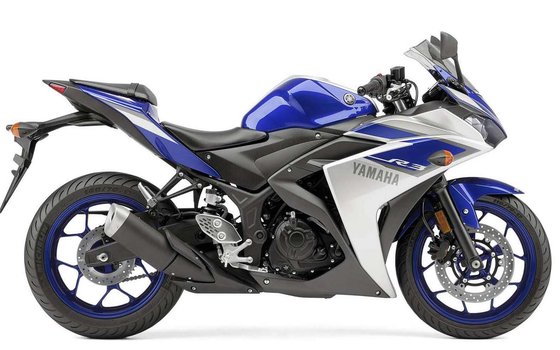
Technical Highlights
- Liquid-Cooled DOHC Engine: The 321cc parallel twin uses forged pistons (trickled down from the R1) and Yamaha’s DiASil aluminum cylinders for heat dissipation.
- Peak Power: 42 HP @ 10,750 RPM (31.3 kW) and 29.6 Nm (21.8 lb-ft) @ 9,000 RPM.
- Fuel Injection: Downdraft induction ensures crisp throttle response, even at low RPM.
On the Road
- Low-End Grunt: Unlike single-cylinder rivals, the R3 pulls cleanly from 4,000 RPM. No need to rev the guts out in city traffic—it’ll lug in 6th gear at 50 km/h (31 mph) without complaint.
- Midrange Punch: The real fun starts at 7,000 RPM. The engine’s 180-degree crank delivers a throaty growl, and torque builds linearly up to the 12,500 RPM redline.
- Highway Manners: At 110 km/h (68 mph), the engine hums at ~7,500 RPM. It’s relaxed enough for all-day touring, though windblast becomes noticeable above 130 km/h (81 mph).
Fuel Efficiency
Averaging 4.2 L/100km (56 mpg), the 14L (3.7 gal) tank nets 330+ km (205+ mi) range—ideal for weekend escapades.
Chassis & Handling: Lightweight Precision
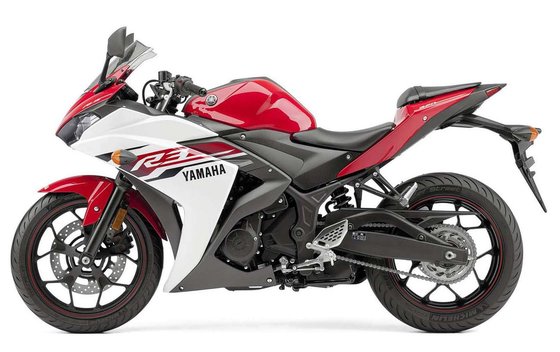
Frame & Suspension
- Diamond Steel Frame: Prioritizes flex over outright stiffness, making the R3 forgiving over bumps.
- KYB Suspension: The 41mm non-adjustable forks and preload-adjustable rear shock are tuned for compliance. Pushing hard on track? You’ll wish for more damping control. On public roads, they’re Goldilocks-perfect.
Brakes
- Front: 298mm disc with a 2-piston caliper (ABS optional post-2016). Bite is adequate, but lever feel is wooden compared to radial setups.
- Rear: 220mm disc—serviceable, though most riders will rely on engine braking.
Tires & Feedback
The stock IRC Road Winner tires (110/70-17 front, 140/70-17 rear) prioritize longevity over grip. Swapping to Michelin Road 5s or Pirelli Diablo Rosso IIIs transforms cornering confidence.
Competition: How the R3 Stacks Up
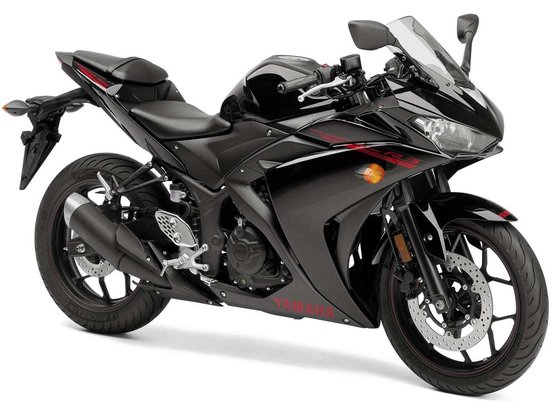
1. Kawasaki Ninja 300/400
- Pros: Slick-shifting gearbox, slightly more power (398cc on the 400).
- Cons: Heavier (180kg/397 lbs), upright ergonomics feel less sporty.
2. KTM RC 390
- Pros: Brutal 44 HP single-cylinder, track-focused suspension.
- Cons: Vibration-heavy, punishing seat, reliability concerns.
3. Honda CBR500R
- Pros: Torquier 471cc engine, Honda build quality.
- Cons: 193kg (425 lbs) weight dulls agility, higher seat (785mm/30.9").
Why the R3 Wins
It splits the difference between the Ninja’s refinement and the RC’s aggression. The twin’s smoothness and Yamaha’s bulletproof reliability make it the smart long-term choice.
Maintenance: Keeping Your R3 Razor-Sharp
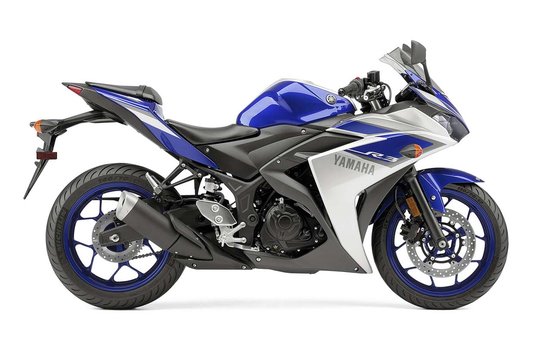
Key Service Intervals
- Oil Changes: Every 5,000 km (3,100 mi). Use Yamalube 10W-40 or equivalent JASO MA2 oil.
- Valve Adjustments: Every 42,000 km (26,100 mi)—a staggeringly long interval for the class.
- Chain Care: Clean and lube every 500 km (310 mi). The stock DID chain lasts ~20,000 km if maintained.
Common Upgrades
- Exhaust: The stock muffler is heavy. An Akrapovič slip-on sheds 3kg and amplifies the twin’s bark.
- Ergonomics: MOTOPARTS.store’s adjustable rearsets ($189) improve cornering clearance for track days.
- Brake Pads: Swap to EBC HH sintered pads for sharper bite.
Winter Storage Tips
- Fuel Stabilizer: Prevent ethanol-related corrosion.
- Battery Tender: Avoid sulfation with a MOTOPARTS.store-maintained charger.
Conclusion: The Everyperson’s Sportbike
The YZF-R3 isn’t about raw numbers—it’s about accessibility. Whether you’re threading through city traffic, carving canyon roads, or dipping toes into track riding, this Yamaha delivers thrills without intimidation. Its blend of approachable power, forgiving chassis, and Yamaha’s legendary durability makes it a perennial favorite.
And when you’re ready to make it truly yours? MOTOPARTS.store has the upgrades to sharpen its claws—from grippy tires to race-spec levers. Because even a gateway drug deserves a few enhancements.
Specifications sheet
| Engine | |
|---|---|
| Stroke: | Four-stroke |
| Max power: | 31 kW | 42.0 hp |
| Max torque: | 30 Nm |
| Fuel system: | Fuel Injection with YCC-T and YCC-I (32 mm throttle body) |
| Max power @: | 10750 rpm |
| Displacement: | 321 ccm |
| Max torque @: | 9000 rpm |
| Bore x Stroke: | 68.0 x 44.1 mm (2.7 x 1.7 in) |
| Configuration: | Inline |
| Cooling system: | Liquid |
| Compression ratio: | 11.2:1 |
| Number of cylinders: | 2 |
| Valves per cylinder: | 4 |
| Dimensions | |
|---|---|
| Wheelbase: | 1380 mm (54.3 in) |
| Wet weight: | 169 |
| Seat height: | 780 mm (30.7 in) |
| Overall width: | 720 mm (28.3 in) |
| Overall height: | 1135 mm (44.7 in) |
| Overall length: | 2090 mm (82.3 in) |
| Ground clearance: | 160 mm (6.3 in) |
| Fuel tank capacity: | 14 L (3.7 US gal) |
| Drivetrain | |
|---|---|
| Final drive: | chain |
| Chain length: | 112 |
| Transmission: | 6-speed constant mesh |
| Rear sprocket: | 43 |
| Front sprocket: | 14 |
| Maintenance | |
|---|---|
| Rear tire: | 140/70-17 |
| Engine oil: | 10W40 |
| Front tire: | 110/70-17 |
| Brake fluid: | DOT 4 |
| Spark plugs: | NGK CR8E or NGK CR8EIX |
| Spark plug gap: | 0.8 |
| Coolant capacity: | 1.2 |
| Forks oil capacity: | 0.956 |
| Engine oil capacity: | 2.6 |
| Engine oil change interval: | Every 5000 km or 2 years |
| Valve clearance (intake, cold): | 0.11–0.18 mm |
| Valve clearance check interval: | 42,000 km (26,098 mi) |
| Valve clearance (exhaust, cold): | 0.21–0.30 mm |
| Recommended tire pressure (rear): | 2.5 bar (36 psi) |
| Recommended tire pressure (front): | 2.0 bar (29 psi) |
| Additional Features | |
|---|---|
| Frame paint: | Electrostatic corrosion-resistant coating |
| Instruments: | Multi-function LCD with gear indicator, fuel economy, and shift light |
| ABS availability: | Optional on select models (2017+) |
| Primary service interval: | 10,000 km (6,214 mi) |
| Chassis and Suspension | |
|---|---|
| Frame: | Diamond-type steel frame |
| Trail: | 94 mm (3.7 in) |
| Rear brakes: | 220 mm disc, 1-piston caliper (ABS optional) |
| Front brakes: | 298 mm disc, 2-piston caliper (ABS optional) |
| Rear suspension: | KYB monocross shock, adjustable preload, 124 mm (4.9 in) travel |
| Front suspension: | 41mm KYB telescopic fork, 130 mm (5.1 in) travel |
| Rake (fork angle): | 25° |



